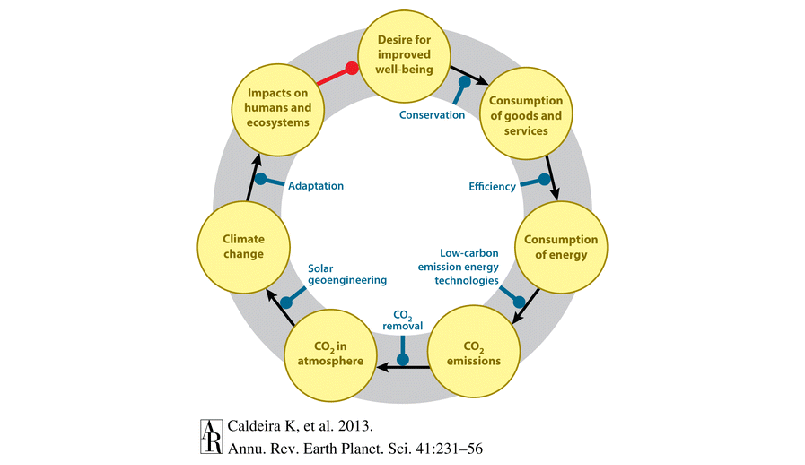

DIVECHA CENTRE FOR CLIMATE CHANGE
IISc BANGALORE
Copyright © 2013 Divecha Center For Climate Change. All Rights Reserved.
Pageviews from April 2013


“The Science of Geoengineering”
By Ken Caldeira, Govindasamy Bala, and Long Cao
The term geoengineering as applied in its current context was introduced into the scientific literature by Victor Marchetti in the title of his classic paper describing deep-sea disposal of carbon dioxide (CO2) (Marchetti 1977).
Abstract : Carbon dioxide emissions from the burning of coal, oil, and gas are increasing atmospheric carbon dioxide concentrations. These increased concentrations cause additional energy to be retained in Earth's climate system, thus increasing Earth's temperature. Various methods have been proposed to prevent this temperature increase either by reflecting to space sunlight that would otherwise warm Earth or by removing carbon dioxide from the atmosphere. Such intentional alteration of planetary-scale processes has been termed geoengineering. The first category of geoengineering method, solar geoengineering (also known as solar radiation management, or SRM), raises novel global-scale governance and environmental issues. Some SRM approaches are thought to be low in cost, so the scale of SRM deployment will likely depend primarily on considerations of risk. The second category of geoengineering method, carbon dioxide removal (CDR), raises issues related primarily to scale, cost, effectiveness, and local environmental consequences. The scale of CDR deployment will likely depend primarily on cost. Read more…


Figure : Most geoengineering approaches fall into one of two categories: carbon dioxide removal or solar geoengineering. These approaches can be viewed as part of a portfolio of strategies for diminishing climate risk and damage. Carbon dioxide removal attempts to break the link between CO2 emissions and accumulation of CO2 in the atmosphere. Solar geoengineering (also known as solar radiation management) attempts to break the link between accumulation of CO2 in the atmosphere and the amount of climate change that can result.).